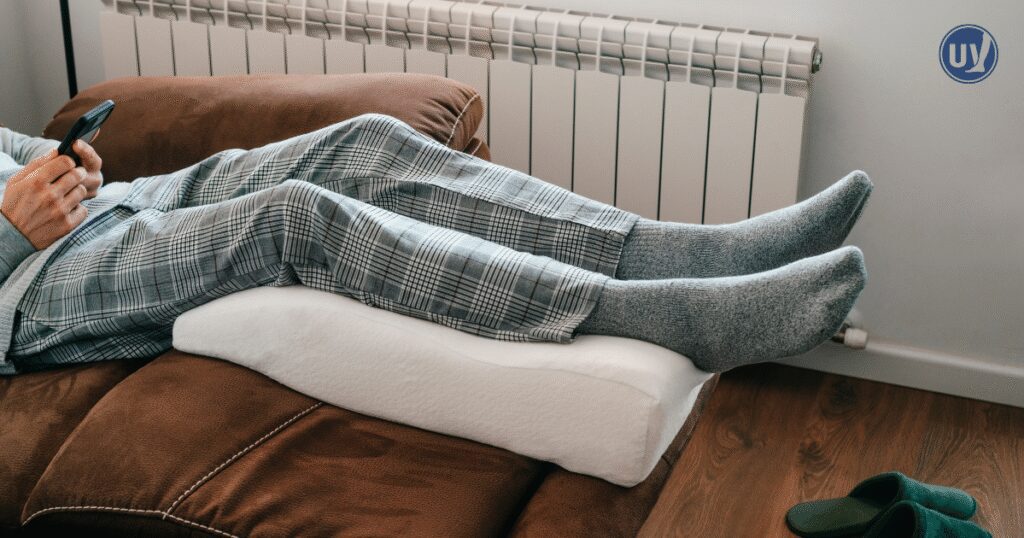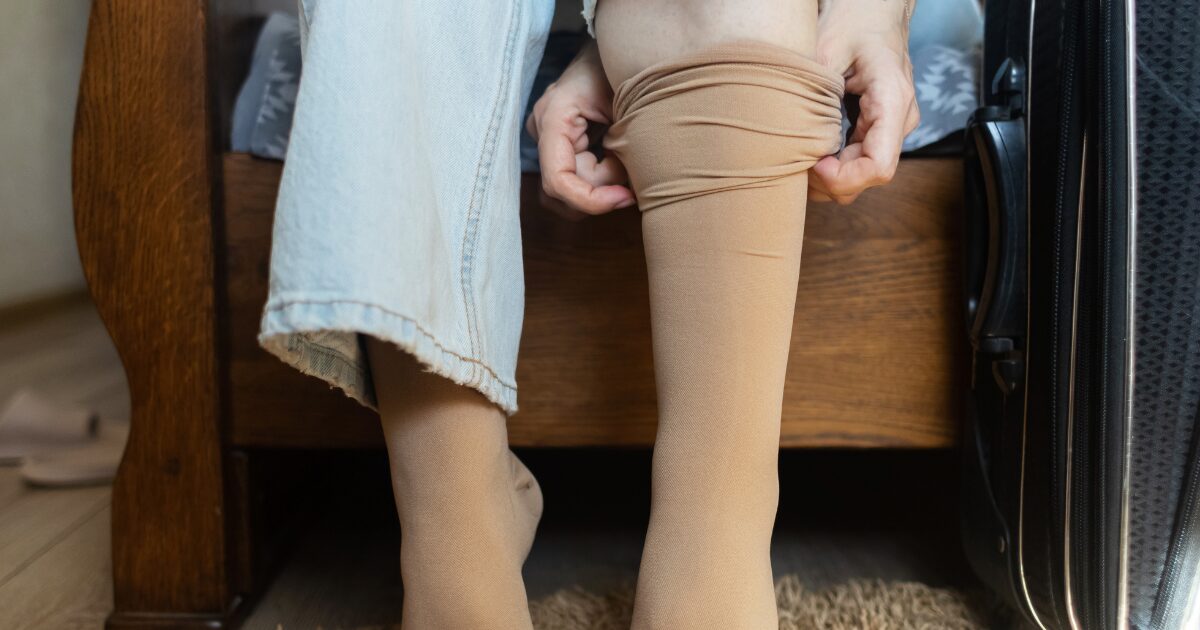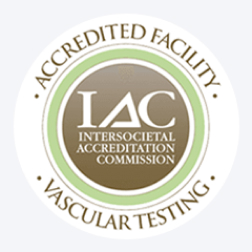If you’ve noticed aching, swelling, or bulging veins in your legs, venous reflux could be the underlying cause. This common condition affects how blood flows back to your heart—and when circulation slows down, it can lead to visible vein changes and daily discomfort.
At United Vein & Vascular Centers, we believe knowledge is the first step toward relief. Venous reflux happens when the valves in your veins stop working properly, causing blood to pool instead of flow upward. Over time, this backward flow can create varicose veins and other symptoms that impact your comfort and confidence.
Understanding what’s happening inside your veins can help you take control of your vascular health. With the right care and minimally invasive treatment options, lasting relief is possible.
What Is Venous Reflux?
Venous reflux is a condition affecting blood flow in your veins. Specifically, it occurs when vein valves become weak or damaged. These valves normally help blood flow upwards, against gravity, back to the heart.
When valve function is compromised, blood can flow backward. This backward flow is referred to as reflux. It can cause blood to pool in the veins, which leads to increased pressure.
There are several key aspects of venous reflux to understand:
- Valve dysfunction: The primary issue, leading to reflux.
- Blood pooling: A result of backward blood flow.
- Increased pressure: Causes veins to enlarge or become varicose.
The impact of venous reflux is more than just physical discomfort. It can lead to swelling and changes in skin color. In some cases, it may also result in leg ulcers or infections if untreated.
Recognizing venous reflux early can prevent complications. Consult a healthcare professional if you notice symptoms. Early intervention improves treatment outcomes and enhances your well-being.
How Healthy Veins Work: The Basics of Blood Flow
Healthy veins are crucial for good circulation. They transport blood back to the heart efficiently. Veins rely on a series of valves to maintain proper blood flow direction.
These tiny valves open and close to prevent backward flow. They ensure that blood moves smoothly upwards, counteracting gravity. This process is vital, especially in the legs, where blood must travel a long way to reach the heart.
Here’s how healthy veins function:
- Valves regulate flow: Ensuring blood moves in the correct direction.
- Muscle contractions aid movement: Walking or moving activates leg muscles, which helps push blood upwards.
- Pressure difference: Venous pressure decreases as blood ascends towards the heart.
Proper function of these mechanisms keeps veins healthy. It also prevents excessive blood pressure buildup in the veins. Understanding how your veins work can help you appreciate the significance of keeping them functioning properly.
What Causes Venous Reflux?
Venous reflux occurs when vein valves fail. This failure causes blood to flow backward. Over time, it accumulates and exerts pressure on vein walls.
Several factors contribute to venous reflux. Age is a common factor. Vein valves weaken naturally with time. As a person ages, the risk of valve malfunction increases.
Another cause is being overweight. Excess body weight exerts additional pressure on veins, leading to valve dysfunction. This pressure can cause or worsen reflux.
Family history also plays a role. Genetics can determine the strength and health of vein valves. Those with a history of vein issues are more prone to develop venous reflux.
Czynniki te obejmują:
- Age: Aging weakens veins.
- Weight: Additional weight stresses valves.
- Genetics: Family history impacts valve health.
Understanding these causes helps pinpoint factors you can control. By managing these, you can reduce the risk of developing venous reflux or alleviate existing conditions.
Signs and Symptoms of Venous Reflux
Venous reflux often presents through noticeable symptoms. Many people experience discomfort or changes in their legs. These symptoms can range from mild to severe.
Pain is a common symptom. It often occurs as an achy or heavy feeling in the legs. This discomfort may worsen with standing or at the end of the day.
Swelling is another sign. Fluid can accumulate due to impaired blood flow, leading to noticeable swelling. This swelling often occurs in the lower legs or ankles.
Look for visible changes in your veins. Prominent veins or varicose veins may suggest venous reflux. These veins appear enlarged, twisted, or bulging.
If you notice these signs, consider speaking with a healthcare professional. Early intervention can prevent further complications and improve your quality of life.
How Venous Reflux Leads to Varicose Veins
Venous reflux significantly contributes to the development of varicose veins. In healthy veins, blood flows smoothly to the heart. Venous reflux disrupts this process.
When the valves in veins fail, blood can flow backward. This backward flow can cause increased pressure in the veins. Over time, veins become stretched and weakened.
This pressure causes veins to enlarge and twist, resulting in varicose veins. These veins often appear as bulging, rope-like structures on the legs.
Varicose veins are more than a cosmetic issue. Addressing venous reflux early can prevent complications. Seek medical advice for suitable treatment options to protect your vascular health.
Risk Factors for Venous Reflux and Varicose Veins
Understanding risk factors can help manage and prevent venous reflux and varicose veins. Several factors can increase one’s risk.
Genetics plays a significant role in developing these conditions. If family members have varicose veins, you might, too. Age is another important factor, as vein valves weaken over time.
Certain lifestyle factors contribute to risk. These include:
- Prolonged Sitting or Standing: Limits proper circulation.
- Obesity: Adds pressure to veins.
- Pregnancy: Increases blood volume and hormone levels.
Awareness of these risk factors is essential. Making healthy lifestyle choices can reduce your chances of developing vein issues. Maintaining a healthy weight and regular exercise are particularly beneficial. Monitoring your health and seeking timely advice can make a big difference.
Diagnosing Venous Reflux: What to Expect
If you suspect venous reflux, consulting a healthcare provider is crucial. They will conduct a thorough evaluation to understand your symptoms better.
The diagnostic process usually starts with a physical exam. Your doctor may inspect your legs for visible varicose veins or skin changes.
A key diagnostic tool is the Doppler ultrasound. This test assesses blood flow in the veins and helps locate any reflux areas. It’s non-invasive and provides immediate results.
During your consultation, your doctor might ask questions like:
- Do you experience leg pain or swelling?
- How long have you noticed symptoms?
- Do you have a family history of vein conditions?
These questions are crucial for a proper diagnosis. They ensure the most effective treatment plan. Remember, early diagnosis helps manage symptoms effectively. It also minimizes potential complications.
Treatment Options for Venous Reflux and Varicose Veins
Treatment for venous reflux often depends on the severity of the condition. Options range from lifestyle changes to surgical procedures, each aiming to improve blood flow.
For mild symptoms, lifestyle changes can be effective. Regular exercise and elevating your legs can reduce symptoms. Compression stockings are also a simple remedy. They apply pressure to your legs, aiding blood flow back to the heart.

For more persistent cases, minimally invasive treatments are available. Sclerotherapy involves injecting a solution into the vein, causing it to close and fade. Endovenous laser therapy (EVLT) uses laser energy to seal affected veins.
In some cases, surgical procedures might be necessary. This includes vein stripping, where problematic veins are removed.
Consult your doctor to determine the best treatment. Their guidance will consider your unique symptoms and health needs.
Zrób kolejny krok w kierunku zdrowszych żył
Understanding venous reflux is the first step toward lasting relief. By learning how this condition affects your circulation, you can take proactive steps to protect your vein health and improve your overall well-being.
If you’re experiencing symptoms like leg swelling, aching, or visible varicose veins, expert help is available. The specialists at United Vein & Vascular Centers offer advanced, minimally invasive treatments designed to restore healthy blood flow and get you back to feeling your best.
Take charge of your vein health, schedule a consultation today and start your journey toward relief and confidence.
Często zadawane pytania
Early symptoms often include leg heaviness, swelling, aching, or visible spider veins. Identifying these signs early allows for timely intervention and better long-term outcomes.
If left untreated, venous reflux can worsen over time, potentially causing significant varicose veins, skin changes, or ulcers. Early evaluation and treatment can prevent these complications.
Minimally invasive procedures, such as endovenous ablation or sclerotherapy, can restore proper blood flow and relieve symptoms. Lifestyle changes and compression therapy may also support vein health. A vein specialist can determine the best plan for your needs.


